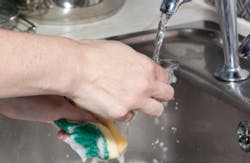Since drinking water disinfection began more than one hundred years ago, chlorine gas has been the method of choice for the vast majority of facilities. Today, approximately two-thirds of drinking water utilities use chlorine gas. Although sodium hypochlorite (bleach) has become the second most common disinfection method, recent trends and concerns (such as bleach degrading, losing strength and being more difficult for operators to control its residuals) have caused bleach users and those considering the move away from chlorine gas to reconsider. The same concern must be given to calcium hypochlorite and onsite generation since the similar problems exist.
New regulations
New regulations are forcing the water industry to recognize issues associated with the use of sodium hypochlorite because of the high potential for contaminants such as perchlorate, chlorate and bromate. Even prior to regulatory changes, concern about these contaminants captured the attention of the American Water Works Association (AWWA), which published Hypochlorite – An Assessment of Factors That Influence the Formation of Perchlorate and Other Contaminants (2009). The report contains recommendations that may have significant cost and management implications while not providing certainty of compliance as new regulations are implemented.
The recommendations that AWWA offered include:
- Dilute stored hypochlorite solutions upon delivery.
- Store hypochlorite solutions at lower temperatures.
- Control the pH of stored hypochlorite solutions at a pH of 11 to 13, even after dilution.
- Control the removal of transition metal ions by purchasing filtered hypochlorite solutions and by using low-metal ion concentration feedwater for the on-site generation systems.
- Use fresh hypochlorite solutions when possible.
- For utilities using on-site generation hypochlorite, use low-bromide salt to minimize the amount of bromide present in the brine.
AWWA chlorine commentary
The AWWA report includes strong statements regarding the favorability of chlorine gas.
"Because of the low concentration of dissolved chlorine gas (when chlorine gas is the method of disinfection being used), appreciable quantities of perchlorate, chlorate and chlorite are not expected to form."
"Many utilities currently using chlorine gas are considering the implications of switching to the use of hypochlorite, both from a cost perspective and from a contaminant perspective."
